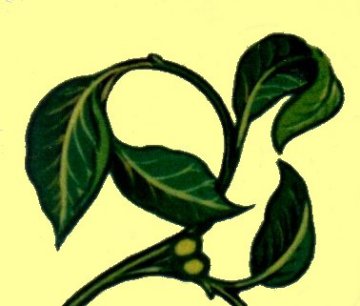 |
BRYANT G BAYLIFFE |
 |
| Section 1
Barrister and Under-Treasurer of the Middle Temple and Hackney, Middx. Esq. (1580 - 1656)
|
||
|
|
||||
| Section | 1 | Title and contents | ||
| ditto | 2 | John Bayliffe (1580 - 1656) The Story. | ||
| ditto | 3 | Notes and Sources. | ||
| ditto | 4 | Map of Chippenham and District, Wilts. | ||
| ditto | 5 | Map of 17th Century London and Middlesex. | ||
| ditto | 6 | Map of The Temple, London. circa 1900. | ||
| ditto | 7 | Map of Manor and Farm of Hackney Wick, Middx. c.1763. | ||
| ditto | 8 | Wick Hall Collegiate School, Hackney Wick, Middx. c.1830. | ||
| ditto | 9 | Map of Manor and Farm of Hackney Wick, Middx. c.1987. | ||
| ditto | 10 | Map of Coombe Farm, Croydon, Surrey.c.1752. | ||
| ditto | 11 | Genealogy of Thorpe of Beaconsfield, Bucks. and Oxf. | ||
| ditto | 12 | Bayliffe Alliances, etc. | ||
|
by
|
||||
| Section 2 | ||
|
and Hackney, Middx. Esq. (1580 - 1656) (Some armorial details below also appear in a separate dedicated article) On the 18 June 1602 John Bayliffe, then 21 years of age was admitted as a student of the Honourable Society of the Middle Temple. John is the first Bayliffe entry in the surviving baptism registers for St. Andrew's Church, Chippenham, Wilts. viz: 5 September 1580. His family home was but a few hundred yards north east of the church across the River Avon. Then called 'Mounckton ffarme', the Tudor homestead consisted of approximately 400 acres of demesne land out of a total for the manor of Monkton juxta Chippenham in excess of 800 acres, for which his father was manor lord. John was bound with his father William Bayliffe of Monkton juxta Chippenham, Wilts., Esq., a Barrister of the Middle Temple, and Charles Danvers son and heir of Henry Danvers of Baynton, Edington, and Wilts. Esq., for a fee of £335. Charles Danvers was then also a student of the Middle Temple (called to the Bar 7 June 1605), and the brother of Anne Danvers who had recently married Henry Bayliffe, John's elder brother and heir apparent of the small family estate. Henry Danvers36, the father of Anne and Charles, was the brother of Sir John Danvers of Dauntsey, Wilts. whose sons were to become so prominent. Charles the eldest was executed for his support of Essex against Queen Elizabeth I in 1601, and by good fortune Henry, the second son, was later made Earl of Danby. The youngest son John was to be one of the signatories on the death warrant of King Charles I in 1649. John Bayliffe moved into the chamber vacated by his father at the Middle Temple, to share occupancy with Robert, son of Robert Barkley of Worcester, Esq. John's family was armigerous, and had enjoyed the patronage of the noble family of Seymour for many years as agents, lawyers, tenants, etc, probably from well before the Reformation. The Seymours, already benefiting from marriages to the heiresses of Beauchamp and Esturmy, increased their land holdings by gift and acquisition from Henry VIII, and afterwards when Edward Seymour, Duke of Somerset, was Protector. In 1554, Gabriel Pleydell, William's father-in-law, was Receiver-General and Chief Ranger & Keeper of Savernake Forest, Wilts.37. At the time of John's move to the Middle Temple his family held several small manors by lease from the Protector's son Edward, Earl of Hertford, including Castle Cary, Som., Monkton juxta Chippenham and Weavern Mill in Slaughterford, both in Wiltshire. His errant brother William also held "The Sign of the Bull" or "The Bull", now the Angel Hotel, Chippenham, from the Earl38. John's father had been admitted as a student of the Middle Temple 27 November 1559 and on completion of his training had taken over the lease of Monkton from Gabriel Pleydell in 1567. Gabriel moved back to his family home of Midgehall, Lydiard Tregoze, Wilts., another Seymour manor. Now a Barrister, he was a Member of Parliament for Chippenham in 1572, and in 1578/9 was an under-sheriff of the County, the same year that the Earl of Hertford became a commissioner of musters. William was added to the Commission of the Peace for Wiltshire in the last few years of the century with the Earl, who chose to keep his distance from the Court at London, becoming Lord Lieutenant of the County in 1601. It was John's good fortune that his father was making major changes in the household arrangements following his new civil responsibilities. John's brother Henry benefited from education at the Inns of Court, and had just made a splendid match with a daughter of the famous and ancient Danvers family, with their first child born in 1599. William, by indenture39 dated 23 May 1601, devised all his property in trust to Henry, a Barrister of Lincoln's Inn. Out of the profits of the estate, sums of money would be paid to sons and daughters in annual succession over a period of 12 years, with John to receive his lump sum of £125 in 1609. In addition, after their father's death, Henry arranged by indenture40 dated 1 April 1614, that John should have the rent of £40 p.a. from Rawlings Farm, just north of Monkton, and appointed his servant Anthony Neate, later of Chippenham, Gent, as trustee. His father William had acquired a 60 year lease of Rawlings from the wealthy clothier family of Horton of Iford, Wilts. by indenture41 dated 17 November 1597. No doubt in those early years his father and brother Henry, both helped with his expenses. John was now rubbing shoulders with the sons of the highest families in the land, but even with the help of his family those early days would have been very difficult financially. The Minutes of the Society's Parliament record the change in occupation of the various chambers, and we find that on the 23 November 1604 a Mr Thomas Trenchard replaced John's chamber-fellow Robert Barkley, and Trenchard in turn was replaced on 8 July 1606 by John's relative Mr Charles Danvers, who paid no fine [fee]. Shortly afterwards, on 28 June 1607, John moved to a part of Nicholas Overbury's chamber [later Sir Nicholas] with Mr Edward Latton over the Middle Temple Gate, for a fee of 40s. This chamber, on the second storey over the great gate forming numbers 4 to 6, Fleet Street, remained in John's occupation throughout his working life at the Temple. This Tudor gate at the head of Middle Temple Lane, was on the site of the gate of the original Knights Templars which had been substantially rebuilt in 1520/21. No drawings of this new gate survive, but it was built of brick, with two chambers, one upon the other, and at least one tower. There were other rooms adjacent including a kitchen. After some alterations in 1631, it was pulled down in 1684 to make way for the present structure designed by Roger North (1653-1734); some 30 years after John Bayliffe had departed. Roger North was a Bencher and in that year was Treasurer of the Middle Temple. The family of Overbury, who shared the chamber with John and Latton, was from Bourton-on-the-Hill, and Aston-sub-Edge, Glos, and Barton-on-the-Heath, Warks. Sir Nicholas Overbury, who was to become the Recorder and M.P. for Gloucester (1603), having held the chamber at the Inn for many years, had vacated it in favour of his eldest son Thomas. Thomas Overbury was to leave the chamber in 1608, and becoming heavily involved in Court circles was soon to fall foul of intrigues, culminating in his incarceration in the Tower of London on 26 April 1613. The many accounts of his slow poisoning and death in the Tower on 13 September 1613, and the subsequent trial and execution of some of the conspirators in November 1614, have provided lurid reading down the centuries. At the completion of the minimum period of his 8 years study the Parliament of the Society on 26 January 1610 noted that 'Mr John Bayliffe, at the request of Sir David Williams, Justice of the Queens Bench, is commended to Mr Swayne, Reader next Lent, to be called to the Bar' and this was duly confirmed on 18 May of that year. Soon after becoming a Barrister John was to marry. Little is known of the event except that the lady's name was Magdalen and they had a son William who died young. Magdalen42 does not appear to have survived beyond the 1620s. As later events show, they had accommodation in St Clement Danes, a small parish close to The Temple, probably rooms in the Strand and only a few yards from Middle Temple Gate. The record shows that during this period, John, together with others including his friend Robert Thorpe, were paying 20 shilling fines 'for their absence and being out of commons'. The Society finances were almost entirely based on income from this type of disciplinary fine, fees of admission, chamber rents, and for special occasions they would have a collection based on various Society rolls, the amount paid by individuals dependant on their seniority in the Society. Among several examples where John stood bond to new members of the Society, one was Edward, the son of Nicholas Barrett of Tytherton Lucas, Wilts. Esq., who had married his sister Elizabeth, 20 February 1599, at St. Andrew's, Chippenham, and was admitted 31 May 1619. The Benchers who formed the Parliament of the Society appointed a new Treasurer from their own ranks every year. The first appearance of an Under-Treasurer at the Middle Temple had been in 1524 when Richard Lister Esq., then the King's Solicitor General, having been Treasurer two years, agreed to carry on for a third year. But, 'thinking the ffatigue of receiving the moneys too great, desired that some person might be appointed ad colligend et levand debita vice Thesaurar' [for the purpose of collecting and levying the dues/monies owed]. Accordingly a Mr Whorwood was appointed and became the first Under-Treasurer. In these early years the post was filled each year by a person recommended by the incoming Treasurer, and in 1591 Richard Baldwyn became the first appointment that went beyond a few years, and in all he was Under-Treasurer for 28 years. The position of Under-Treasurer became 'next to the Treasurer, the Chief Officer of the House, both as to profit and credit'43. At the Parliament held on 19 November 1619 it was noted that 'Mr Richard Baldwyn is removed from the Under-Treasureship, which he has held for a long time, and Mr John Bayliffe, a Master of the Utter Bar, is chosen Under-Treasurer, with the exemption of pensions, taxations, contributions, and other burdens, and from all moots, exercises, and offices incumbent on an Utter Barrister'. Without the benefit of a family estate behind him, John must have been pleased to secure this post, which gave him regular income and accommodation and the prospect of acquiring a small estate of his own in the fullness of time. One task, typical of the many required by the appointment, was recorded on 30 June 1620, 'that the shops within this House shall be let on lease by the Treasurer at the utmost value. The Under-Treasurer must take care for the collection of the arrears of rent, and the payment of rent hereafter'. On the 27 October 1620 'John Bayliffe ... by direction and appointment this last vacation, has amended the dark and noisome ways and passages from Elme Court, Pumpe Court, and gallery towards the Church, and has new built and gained to the House two new single chambers, one in the place of the old entry and way between Pumpe Court and Vine Court, and the other at the foot of the new stairs of the gallery; and also two new shops in the entry at the foot of the steps leading out of Pumpe Court, on all of which he has spent £160'. On the same day John was required by the Benchers to oversee 'that the order of 30 June 1598 against casting of water and other annoyances out of windows shall be revived and strictly put in execution'. The name Vine Court ceased to be used after the disastrous fire and rebuilding in the 1680s. The site of the court is now occupied by the eastern end of Pumpe Court and a block of chambers. Now aged 40 years, John was becoming involved with more than just the daily routines of the Under-Treasurer. He became the Member of Parliament for Chippenham, together with Edward Hungerford, Esq., in the 3rd Parliament of James I from 30 January 1621 to 6 January 1622. There was family precedent for this, though I suspect John's selection had more to do with having his permanent address just along the road from the Palace of Westminster, than for any political motivation on his part. John's elder brother Henry had been M.P. for Malmesbury in 1586 and 1589, and his father William had been the M.P. for Chippenham in 1572. The House of Commons was now refusing to approve the taxation proposals of the Stuart King, and this Parliament was short lived. John is only mentioned once; on the 4th May 1621 John (written as Mr Baily) was named to a small committee appointed to consider a bill regarding the Manor of Fletton, Hunts44. Perhaps of more significance to his status in society, is the fact that John was added to Commission of the Peace for Westminster and Middlesex in 162445. He thus became involved in the grisly business of a Justice of the Peace at a time when sentencing did not so much fit the crime, as attempt by its very severity to deter others from indulging in it. With an uncooperative House of Commons the Stuarts ruled increasingly by direct order through the county lieutenants, their deputies, justices, and constables. John's connection with the Overbury family continued, and is noted in the Parliament Minutes for 13 October 1621; 'Mr John son and heir apparent of Charles Pleydell of Kilborne, Middx. Knt. was specially admitted; bound with John Bayliffe and Walter Overbury, Esq.; fine £3'. Walter, who built the house at Barton-on-the-Heath, was a younger brother by 12 years, of Sir Thomas who was poisoned in the Tower in 1613, as previously mentioned. The Heralds, Henry St George and Samson Lennard, returned to the College of Arms in London after their Visitation to Wiltshire in 1623 to take evidence of pedigree, and confirm the right of individual families to bear arms. In the case of the Bayliffe family, as with most others in the County of Wiltshire, the pedigree attested by John's brothers Henry of Monkton juxta Chippenham, and Richard of Tytherton Lucas, was initially subject to the note 'produced a coate, but to be better proved46'. With John living in London it was left for him to arrange the Confirmation of Arms, and since he also applied for his own personal crest, the final document confirming the arms and including the grant of crest, was dated 28 September 1624. Further details of John's income appear in the minutes on 27 June 1628: 'By the Orders and Directions of the Treasurer and Masters of the Bench concerning the claims of Fees, wages, and other duties made by the Under-Treasurer, Steward, Chief Butler, Chief Cook, and other officers and servant47'.
After alterations to the chambers over the Gatehouse, the minutes of 17 June 1631 record that Messrs Roger and Thomas Warre were admitted to the lower chamber over the gate, and Messrs Edward Latton and John Bayliffe [re]admitted to the upper chamber, each to pay £6 3s 4p towards the expense of the new staircase to the chambers over the gate, and to enlarging them. John was to be remitted the above payment on account of his pains in 'contriving and improving the building adjoining the said gate'. In October 1632 his friend Robert Thorpe was appointed Treasurer, and at the Parliament of 25 October 1633, arrangements were made 'for a masque to be presented before the King at Court in joyful acknowledgement of the happy birth of his second son, the Duke of York, for which each Inn will contribute £600. The Benchers have taxed themselves at £3 each, Barristers at 40s, and other gentlemen at 20s ... As the money is wanted, and the roll may be long in gathering, £300 shall be forthwith procured upon security, which John Bayliffe, one of the ancients of the Utter Bar ... has undertaken to provide'. Later, on 24 January 1634, the Parliament reported that 'Mr Thorpe one of the committees for the masque of the four Inns of Court before the King, have stated that £600 more was wanted from each house, The Masters of the Bench order that £600 be borrowed on security, and that John Bayliffe Esq., U.T., William Lane, Steward, and John Barker, Chief Butler, who are to be bound for the repayment thereof, shall be saved harmless by the Society'. The masque titled 'The Triumph of Peace' was performed at the Banqueting Hall, Whitehall and repeated at Merchant Taylor's Hall, with the final overall cost said to be £25,000, prompted the following letter from [Philip Herbert] Earl of Pembroke and Montgomery, Lord Chamberlain, to [Thomas, Lord Coventry] Lord Keeper: 'The King is so much taken with the noble entertainment given to him by the gentlemen of the Inns of Court, that he invites one hundred and twenty gentlemen of their companies to the masque which is to be danced by his Majesty on Shrove Tuesday next; and desires the Lord Keeper to convey this invitation to them. Whitehall, 5 Feb 1634' Now began a difficult time for John who, though he was confident of a steady income, was taking on additional liabilities. With the quality of life in London deteriorating as the population pressures increased, those who felt they could afford it were moving to houses in outlying villages to the north of the built-up area, and mention is made of John having a 'mansion house' in Islington, though it has not been possible to identify it. Between 1633 and 1638 John acquired from Thomas Haynes of Hackney, Middx, two properties which had been in single ownership since at least the end of the 16th century; Wick Farm [sometimes called the Manor and Farm of Wick], Hackney, Mdx, and Coombe Farm, Croydon, Surrey. From medieval times Wick Farm consisted of 200 acres of arable land, 56 acres of meadow, and a fishery. Wick House to the west of the causeway, backed onto its own extensive gardens and 'pleasure grounds', which lay against Hackney Marshes and the River Lea. The whole aspect must have been most pleasing, with the wet lands to the east providing wild fowl, fishing, and summer pasture, with the productive arable lands on the higher ground to the south west of the house. A mansion on the site of Wick House is known to have existed from Elizabethan times, and by the middle of the 17th century this appears to have been wholly residential with separate farmhouse and outbuildings. One source describes John's friend Robert Thorpe as having a joint interest in the properties, though documents which support this are now lost. He does however appear as witness to various documents associated with the Manor of Hackney, including a conveyance of Hilly Field dated 14 May 1638. In any event Robert died in 1639 without reference to the Hackney properties in his Will. Regarding the manorial status of Wick House and the farm, the use of the term 'Manor' was put to the test during John's period of ownership. It appears that John had paid nothing to the Lord of the Manor of Hackney since moving into the property, and on 20 May 1642 William Benning, Gent, owner of the Manor of Hackney, brought a suit against John for payment of annual rent and service. The document48 confirms that by the 1640s Wick Farm was half the original area, and Benning complained that 'with the Manor of Hackney was one messuage, stables, gardens, orchards, yards and 100 acres of land called the Manor or Farm of Wyke (excluding the Hackney Marsh pastures), which was held of the Manor of Hackney by fealty of Court at 40s 2d rent p.a. and other services'. Benning had by then owned the Manor of Hackney about seven years, the same period of time that John had occupied Wick Farm. John denied any obligation to pay dues to the Manor of Hackney and the claim was sent to trial at law. The next we hear of the matter is November 1652 when a survey of the Manor of Hackney was undertaken into the possessions of Thomas, Earl of Cleveland, by a commission for the 'sale of Several Lands and Estates forfeited to the Commonwealth for Treason'. Wick Farm is not mentioned by name, but in a concluding section of the document we find John was paying a quit-rent of 9s p.a. to the Reeve of the Manor of Hackney, less than a quarter of the original demand. The payments by other parties varied from 1s 0d to £6 16s 0d. Major disruptions to the economies of the Inns of Court were the recurring outbreaks of the plague. Many members would disperse to their respective family estates at the first signs, and a typical order made by the Benchers was recorded in the minutes for 23 June 1637: 'As the plague still continues, there shall be no reading this summer, nor any vacation for those who have vacations to serve; but tomorrow three weeks commons shall break up, the company dissolved, the House be made up, and someone appointed to look to the safety of it [John no doubt], with a weekly allowance, as before'. Some idea of the dress worn by Barristers going about their daily business within the Temple precincts at the time can be gained from the painting of Robert Ashley, a fellow Wiltshireman, Barrister of the Middle Temple, and contemporary of John. Ashley died in 1641, aged 76 years, bequeathing his collection of books to the Society, to be the founder of the present Middle Temple Library. The painting by Thomas Leight, was commissioned by the Society some 12 years after his death. Ashley's ankle length black gown, similar to the modern graduation gown, has long sleeves. His hair is swept back and trimmed clear of the lace collar or ruff, which has two tassels. The sleeves have turned up cuffs with lace trimmings, and fashionable black square-toed shoes complete the picture. On the 9 November 1638 after 31 years, now described as a most ancient Master of the Utter Bar, John was to lose his chamber-fellow Edward Latton who surrendered the accommodation to Mr Woodchurch Clarke. Clarke moved into the 'eastern part of an outer chamber ... on the second floor over the great gate of the Middle Temple; to a study adjoining it on the north; to a bedroom adjoining the chamber and study to the east; and to a small garret for a servant at the top of the stairs leading to the chamber over the new buildings on the south part of the stairs; et ambulatorio vocato the Leades, [and to the walk called the Leads] situated over the said chamber; fine £4 10s'. As we know, part of John's income came from allowances for handling and recording the letting of chambers and shops within the Middle Temple. He points out to the Benchers on 27 November 1640 that he had two ground chambers in the old building before it was pulled down and rebuilt in 1633, with two assignments in being, and an interest for years in two little shops unexpired; a tailors shop in Pumpe Court and a stationers shop in Vine Court. A barbers shop towards Middle Temple Lane was also claimed. He had to prove that he had these rights through a 'valuable consideration' and on 29 October 1641 the Benchers agreed that the Treasurer should draw up a lease for 21 years from the last Michaelmas 'at the yearly rent of a peppercorn in satisfaction of his estate'. John's finances were now in a parlous state, and his liabilities were obliging him to borrow money off friends and relatives. A generation was to pass before your friendly bank manager would appear on the scene. Curiously, the person credited with being the first banker, Francis Child, set up his business next to the Middle Temple Gate, down to and partly over Temple Bar. Whether from absolute necessity or prudence in the face of the approaching Civil War, in 1642 John conveyed the two farms to Francis Kempe and Oliver Clobery, later to be his step-sons, to Anne Thorpe his bride to be and widow of Robert, to his nephew William Barrett, the elder and to Thomas Lane his servant in trust to pay his debts. There was a proviso that John could remain in occupation and to use the income of the estate to pay his debts, holding the trustees harmless from them. He could also buy back the properties after his debts were paid, should he so wish49. The principal part of the debt at that time was owed to Oliver Clobery and Ann Lee of London, understood to be the mother of Anne Thorpe. It is worth recalling that the recently widowed Anne Thorpe daughter of Sir Bryan Janson, had 3 sons and 5 daughters by Robert. Of the daughters; Ann had married Francis Kempe of Chipping Wyckham, Bucks, Gent, at Beaconsfield, 30 November 1624; Elizabeth married Oliver Clobery, Citizen and Girdler of London, Gent, 10 December 1633 at St Margaret Moses, Friday Street in the City; and Dorothy married circa 1636 John's nephew, John Bayliffe of St Mary le Bow, Cheapside, Citizen and Silkman of London, Gent. John of Cheapside died in 1641 aged 26 years apparently without issue, and in his Will he made his Uncle John of Hackney his executor, who due to his indebtedness was unable to administer the Will50. The Will was proved 19 November 1646 after John's widow Dorothy Thorpe had married for the second time at St Mary Abbots, Kensington, Middx, on 2 April that year. Her 2nd husband Captain Thomas Ireton, was a younger brother of Henry Ireton (1611-1651) the Regicide51, and Cromwell's second in command. Joshua Sprigg in his contemporary account52 of the siege of Bristol in September 1645 recalls that 'The horse that entered here (besides the forlorne-hope) so valiantly led on by Captain Ireton were in several parties commanded by Major Bethel, Major Alford ... and Captain Ireton with a forlorn of Col. Rich his Regiment, interposing with his horse, between the enemies horse and Col. Hammond, received a shot with two pistol bullets which brake his arm: by which means the entrance of Col. Hammond did storm the Fort'. Another brother, John Ireton, was Mayor of London in 1659. The Company of Silkmen was incorporated in 1631 and appears to have assumed some of the Mercer's monopoly. The Company however later became defunct, with no records surviving. Francis Hungerford (no doubt a member of the noble and landed Hungerfords of London and Wiltshire, etc.) was apprenticed to John, who provided £40 for him in his Will 'so that he may be bound to some other after my decease'. In August 1642 the Civil War had started. The Inns of Court became deserted with consequent loss of income. Those tenants of chambers and shops that remained claimed great hardship, as with Samuel Jocelyne on 12 May 1643 who claimed that 'during these hard and troublesome times, when no commons are kept in the House, [he wanted] to pay no more than 10s a quarter for his shop in the churchyard'. John, now 63 years of age, found himself having to make up balances out of his own pocket to keep the Inn solvent. The 22 November 1644 saw John trying to claim money from the Treasurer, but the Benchers 'could do nothing in these hard times'. London, being the Parliamentary Party stronghold became the first place where persons had to appear before the Committee for Compounding with Delinquents53. In 1644 John was assessed and an Order made that he be brought up in custody. From his assessments of £100 & £500 he was to pay £60 as his proportion. In March 1654 a Certificate of Public Faith was issued. There is no evidence that any of his brothers, either in London or Wiltshire had to compound for delinquency, suggesting that as with most of the Wiltshire gentry their sympathies, if not their actions, were with Parliament. With John's finances in disarray the matter of rents and allowances came up again and in the minutes of 22 November 1644 the Benchers confirm that 'On the request of Mr Bayliffe ... by letter to Mr Parker, Treasurer, the Masters of the Bench can do nothing in these hard times concerning the £20 a year desired by him; but the matter of the shops, which he alleges were settled on him by act of Parliament, was referred to Mr Whitacker and Mr Treasurer who next day examined the said orders, and settled and confirmed the shops on him, with the profit and all the rents and arrears'; and on 31 October 1645 they report that 'Through the troubles and distractions of the times, by reason of these unnatural civil wars, there has been no reading in this or any other Inn of Court for three years, so that the number of Benchers is grown very small'. During this quiet period in the Temple, there was a significant admission. On the 18 April 1646 John Aubrey, Gent, later F.R.S., the son and heir apparent of Richard Aubrey of Broadchalke, Wilts. Esq. was admitted for a fee of £5. Born at Kington St Michael, Wilts. less than 3 miles from the Bayliffe home at Monkton juxta Chippenham, Aubrey mentions the family several times in his notes on north Wiltshire transcribed in the 'Wiltshire Collections', by Canon Jackson, published in 1862. Now that the first phase of the Civil War was over the Benchers were concerned about the finances of the Society and on 29 January 1647 ordered that 'The letters patents and feoffments of the House are to be viewed, and Mr Treasurer is to report on them. An exemplification is to be made of the letters patent if needful. The bonds of the Under-Treasurer are to be inquired after'. By the 13 May 1647 the minutes show increased optimism. 'By reason of the great troubles of the kingdom, there has been a discontinuance of Commons and dispersion of the Society, and no mooting or arguing of cases, but now [The King was a prisoner and Parliament controlled the country] all passages are open to and from all parts of the kingdom, and there is a competent number of Students and Barristers, Vacationers met in Commons, residing in the House, etc. The exercise of Mooting to begin on 18 May ... every Barrister to attend'. A certain amount of desperation by the Benchers is also evident, as noted on the 26 November 1647 'On Mr Treasurer's report of the debts of the House upon the Under-Treasurer's account, the Masters of the Bench, reflecting upon the great increase of debt growing from the interest of the sum due to him, ordered Mr Treasurer to pay Mr Bayliffe ... out of the stock of the House £400 [a margin note states that John received this sum on 2 December], in part payment of the said debt, which as the accountant has cast up, is £1,812.13s. As Mr Henley, at the desire of the Masters of the Bench, has formerly examined the said account and taken exceptions thereto, the Masters desire him to receive Mr Bayliffe's answer to these exceptions and to any further exceptions or surcharges which Mr Henley shall think fit to be added. Mr Bayliffe is to attend Mr Henley with all bills, discharges, and other notes relating to the account. Mr Henley is entreated to report next term'. Nearly a year passed before the Parliament held on 27 October 1648 noted that 'On the petition of Mr Bayliffe ... submitting himself to accept £1000. beside £400 already paid by the Treasurer, for his demand for £1,812.13s accounted to be due to him at the foot of Mr Puleston's account, which was not yet allowed; the Masters of the Bench being very few, will put off the consideration until next Parliament'. A month later they report that 'The £400 mentioned in the last Parliament shall be forthwith paid out of the Treasury, and the other £600 as soon as convenient'. Further payments of arrears were made to John in 1650. The cash resources of the Society were clearly incapable of meeting the total debt and continuing running costs, without realising some assets. Accordingly, on 6 June 1649 a written Order was made 'That all the plate of the House, more than is for ordinarie use, be forthwith solde by Master Treasurer and the moneys thereof payd to the Under-Treasurer in part of his satisfaction of his debt due to him from this House'. The drastic measures taken to pay off the loans made by John undoubtedly explain why early plate of the House, such as 'the faire gilt bowle and cover, a token of his love and thankfulness' presented by the elderly Sir Lawrence Hyde in June 1639, has not survived in the possession of the Society. At some time during the first Civil War, John now in his 60s had married Anne Thorpe, widow of Robert Thorpe who had died 19 February 1639 in his chambers on the ground floor of the old brick buildings on the north side of Pumpe Court. He was buried at Beaconsfield, Bucks, where a black marble plaque was placed by his widow on the south wall of the south aisle. The plaque survives to this day, though it can now be found on the west wall of the south aisle following the 19th century restoration of the church. Her son Bryan Thorpe, a Barrister and still in chambers was causing concern, and on the 26 October 1649 the Benchers record that Bryan was 'crazie in his wits, and a nuisance to Mr Proby, his chamber-fellow, by making his chamber more unsavourie than a house of Office ... to be removed before next Parliament'. Anne removed her son, and on 25 May 1650 was permitted by the Benchers to dispose of the chamber in Elm Court. This she did to her son's late room-mate Mr Robert Proby, for life and one assignment after, without fee.
Interesting Orders were placed on John as Under-Treasurer dated 24 May, and 28 June 1650. He was to remove those who keep families in the House and other lodgers not of this House, and 'all strangers and familistes ' [family and friends], confirming Orders by the Lord Keeper of the Great Seal, for the Government of Inns of Court and Chancery, dated 15 April 1630 which included:
Although 70 years of age John was still involved with the management of the fabric of the Temple buildings on behalf of the Benchers. On 28 June 1650 he was 'ordered with a skilful workman to survey the chimneys complained of next to Pumpe Court, and to certify to Mr Treasurer what is to be done to stop them smoking, and what the charge will be'. On the 22 November 1650 he was requested 'to view the decayed buildings of Vine Court assisted by workmen', and on the 4 February 1653 'as the building on the east side of the Middle Temple Lane is ruinous, part having fallen and the remainder in danger of falling and doing mischief to the neighbour building (it being very high) and to passengers'. At the age of 74 years the Benchers thought it was time that John should retire, and it is recorded on the 10 February 1654 'Mr Bayliffe dismissed from the Under-Treasurership in consequence of his long neglect and disability to execute the office by reason of age. When he has perfected his accounts and delivered up the books and writings in his charge, a gratuity shall be given to him. William Jones, Esq., of the Utter Bar is appointed in his place'. One month later a Mr Fleetwood Dormer moved into the place of Mr Woodchurch Clarke, who was sharing John's chamber. Later still, on 3 November 1654, 'the late Under-Treasurer shall have liberty to dispose of his chamber over the gate with an assignment in regard to cost and repairs. He shall have Mr Treasurer's assistance for the recovery of rents due for shops and other things which he holds of the Society by lease'. Meanwhile John's servant, Thomas Lane, was also in difficulty with the Benchers, who indicated they would start proceedings for payment of £58 4s 6d due upon the foot of his account, and for rents, goods, and utensils of the house, come to his hands and not accounted for. One of John's last acts at the Middle Temple concerns the admission of a great nephew, which is recorded in the minutes for 28 May 1655, 'Admission of Mr William, son & heir-apparent of William Barrett of the Middle Temple, Esq.; specially. Bonded with his father and Mr John Bayliffe both of the Utter Bar. Fine £3'. A month later, John had moved out of his part of the chamber in the 2nd storey over the Gatehouse, and William Barrett junior moved in for life, with one assignment after, without fine. John's connection with the Middle Temple continued after he had moved out of the chamber, for collection of the rents of his other chambers and shops. With his death intestate, and burial at his wife's family home town of Beaconsfield on 22 August 1656, several people became involved in attempts to administer his estate. It was however Elizabeth Barrett who, after the death of John's widow Anne in the following year, and burial at Beaconsfield on 27 September 1657, followed by her own husband William's death in 1658, who was claiming that the rents were rightfully hers. After some difficulty and mediation through the Benchers, it seems she received an agreed sum up to the end of John's 21 year lease in 1662. Shortly before John's death in 1656, he had sold Coombe Farm to William Barrett the elder, the only survivor of the original trustees54. The minutes of the Homage Jury for the Manor of Croydon55 held in March the following year record the sale of the freeholds including the farmhouse, 'held freely of the lord by rent of 9s.8d'. The copyholds were, according to the Custom of the Manor, granted to William who had to pay '3s 6d for a dead herriott, 4s 1d for a relief, and a fine at the lord's will because he was not a tenant before'. With William Barrett's death in 1658 the stage was set for a succession of claims on the John's estate by heirs and assigns of the original trustees, not to mention members of the Bayliffe family who considered themselves heirs-at-law. One of the first claims was by Elizabeth Barrett who sued her stepson, William Barrett, jun'r, only recently admitted to the Middle Temple as a student, as the rightful heir of her late husband's estate. She claimed that her husband intended that she should pay John Bayliffe's outstanding debts, and provide portions for her own children. Any success she may have enjoyed was short lived, thanks to the counter claims for John's debts of nearly £4000 to the estate of Oliver Clobery, by his kinsman Abraham Johnson, Citizen and Fishmonger of London, as executor in trust of his Will for Henry Clobery, son and heir of Oliver. Oliver Clobery, descended from the armigerous family of Bradstone, Devon, died in 1649 at Wick House, Hackney, under the care of his step father-in-law John Bayliffe and mother-in-law Anne Bayliffe, relict of Robert Thorpe, formerly Janson. Oliver made his Will at Wick House 19 September 1649, requesting that his burial should be at Beaconsfield near his wife Elizabeth Thorpe, who had predeceased him. He added a codicil which reminded his executor that 'I have a chest at Mr William Adams, a trunk at my Uncle John Johnsons, a bed ... at Mr Gold's house, and two Livery Gownes and a Hood at Girdlers Hall'. This whole area including the Hall, Friday Street and its 3 churches, etc, was to be destroyed in the great fire of London in 1666. The Will was proved at London, 15 November 164956. With the Cloberys and Johnsons in occupation of Wick House and Farm, nothing more is heard until seven days after the burial of John's widow, Anne Bayliffe. With the estate now heavily encumbered, and with John dying intestate and without surviving issue, his youngest brother Hugh Bayliffe late of Cirencester, Glos. Gent. took out letters of Administration57 as next of kin on 4 October 1657. In the words of his son, written nearly 30 years later, 'the property descended to Hugh Bayliffe ... only [surviving] brother of John, but being molested at the time of Usurpation [the Interregnum], exhibited a Bill in court and obtained a decree for his quiet possession ... that those whom he brought the suit against, being determined, forcibly turned Hugh Bayliffe out and so bruised him that he died not long after58. After Clobery and Johnson had apparently fended off the claim by Elizabeth Barrett, the Bayliffe family in Wiltshire attempted to gain control. William Bayliffe of Lincoln's Inn and Monkton juxta Chippenham, John's nephew, and the son and heir of Henry Bayliffe previously mentioned, brought a chancery suit59 in 1661 against Henry Clobery, Abraham Johnson, William Kempe of Cornhill, London (son of Francis), Elizabeth Barrett and her stepson William. Describing the farms at Hackney Wick and Croydon, he refers to a Capital Messuage at Wick, suggesting that the substantial dwelling house known as Wick House was, even then, separate from a farmhouse and outbuildings to the south west. William apparently failed in his claim, with Clobery and Johnson responding that Oliver Clobery was still owed £4000 and Ann Lee about £3000. William valued the estate at £500 p.a. and it is difficult to see why all these debts could not have been paid by the trustees between 1642 and 1656. With the death of Henry Clobery in 1664, then of Hackney, and his burial at Beaconsfield, the estate passed to Abraham Johnson, sen'r, and although there were other failed claims by descendants of the former owner Henry Haynes, Abraham continued in occupation, including entering the Coombe Farm copyholds in 1670. The fate of Wick and Coombe Farms appeared settled, even after Edward Johnson, grandson of Abraham, inherited the estate in 1674, held in trust by his grandmother. Further claims by descendants of the Haynes family in 1684 and 1685 came to nothing. Yet another John Bayliffe, the son of Hugh Bayliffe previously mentioned, made a Bill of Complaint60, dated 8 December 1686, against Edward Johnson for a sight of the deeds, so that Johnson could prove his title. He maintained his rights to ownership as heir of his father, and complained that 'his father was unable to educate him at school, and so being illiterate and raw in years at his father's death he applies himself'. No more is heard of his claim. On the death of his grandmother in 1689, Edward Johnson gained full possession of the estate, and contact with the Bayliffe family in Wiltshire was renewed. The head of the family at that time was another John Bayliffe of Chippenham, Gent. grandson and heir of Henry Bayliffe of Lincoln's Inn previously mentioned. The parties came to an arrangement whereby Edward Johnson, then 27 years of age, bought out any residual interest in the estate held by the Bayliffe family 'for a consideration' by Indenture dated 3 January 1690. Within a month of this event, and no doubt with some relief, Edward Johnson, later of Clare, Suffolk, sold Wick Farm and Coombe Farm for £2155 7s 6d to Edward Ambrose. It would be wrong to assume that with the indenture of 1690 the Bayliffe family had given up interest in the estate. In 1723 Grace Jones, widow (nee Bayliffe) the granddaughter of Thomas Bayliffe, brother of Hugh and John Bayliffe of Hackney, sought further benefit from the estate. The Judgement dismisses the complaint without costs on Tuesday, 4 March 1729 (the Complainant by then almost certainly deceased). The document gives a brief outline of the history of the estate from 164161, which seems to have been enrolled as a definitive judgement, the complainant being admitted to prosecute in forma pauperis [as a poor person]. The fact that this action occurred so late may well be because Charles Bayliffe of Barnard's Inn and the Six Clerks Office in Chancery Lane, the youngest brother of John who had settled with Edward Johnson, was able to facilitate the process. The fate of the two farms is of interest. With the coming of the North London Railway, the farmhouse and outbuildings at Hackney Wick were demolished in 1850. Wick House, later called Wick Hall, became a Collegiate School, and being made virtually uninhabitable by it's proximity to the railway, was itself demolished about 186262. The site later formed part of Gainsborough Square, and that area of Hackney Wick is now fully developed with urban housing, industry, and massive highway construction in the form of the A102(M). The best of the farm land to the south west forms the northern extremity of Victoria Park, now in the London Borough of Tower Hamlets, lying between Victoria Park Road and Cadogan Terrace. Coombe Farm, Croydon, has been even more fortunate and is currently undeveloped. |
||
| Section 3 | ||
TEXT NOTES:
|
||
| Section 4 | ||
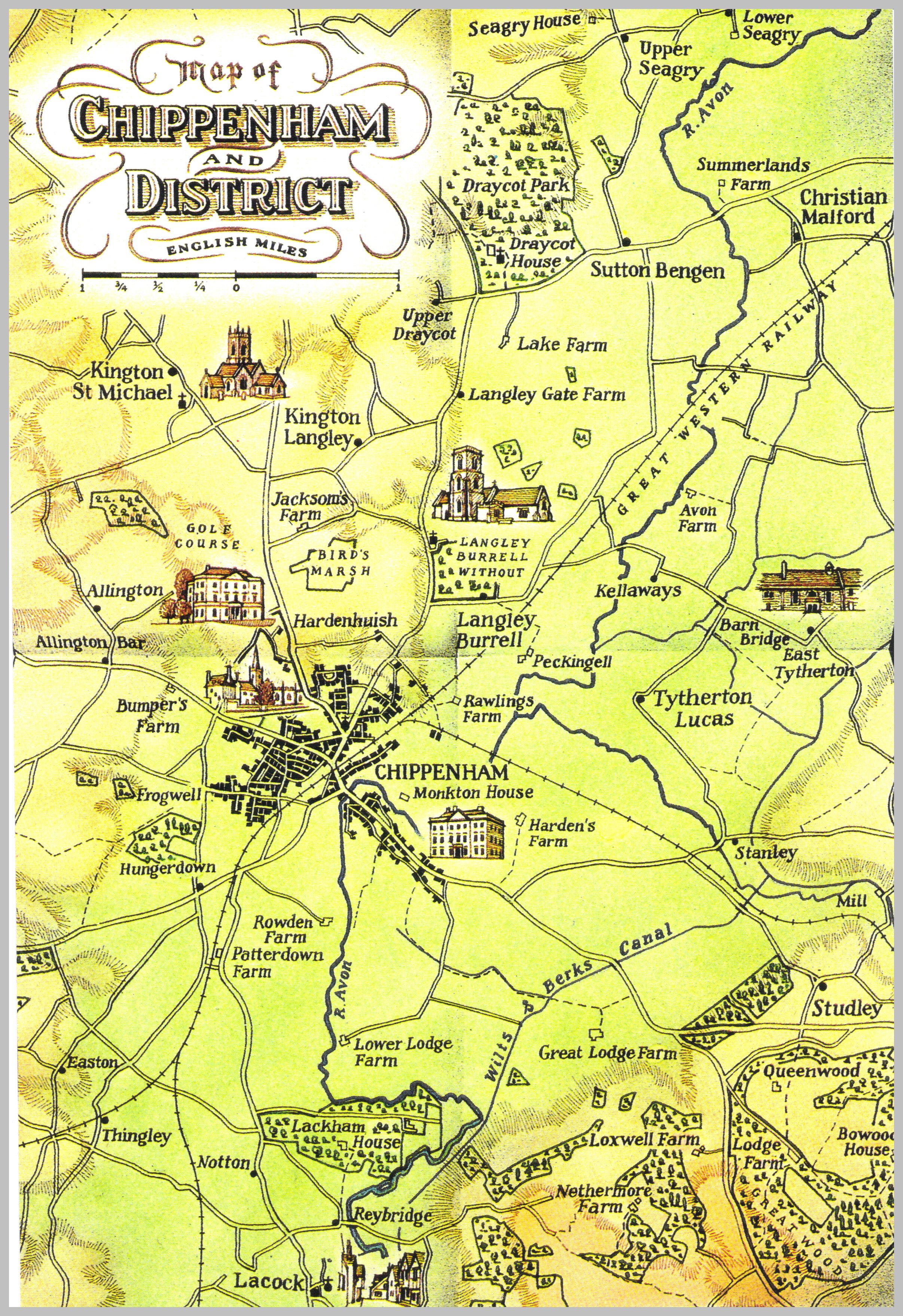
(from "Kilvert's Diary" 1870-1879, W. Plomer (ed.) 1986 facing p.8) |
||
| Section 5 | ||
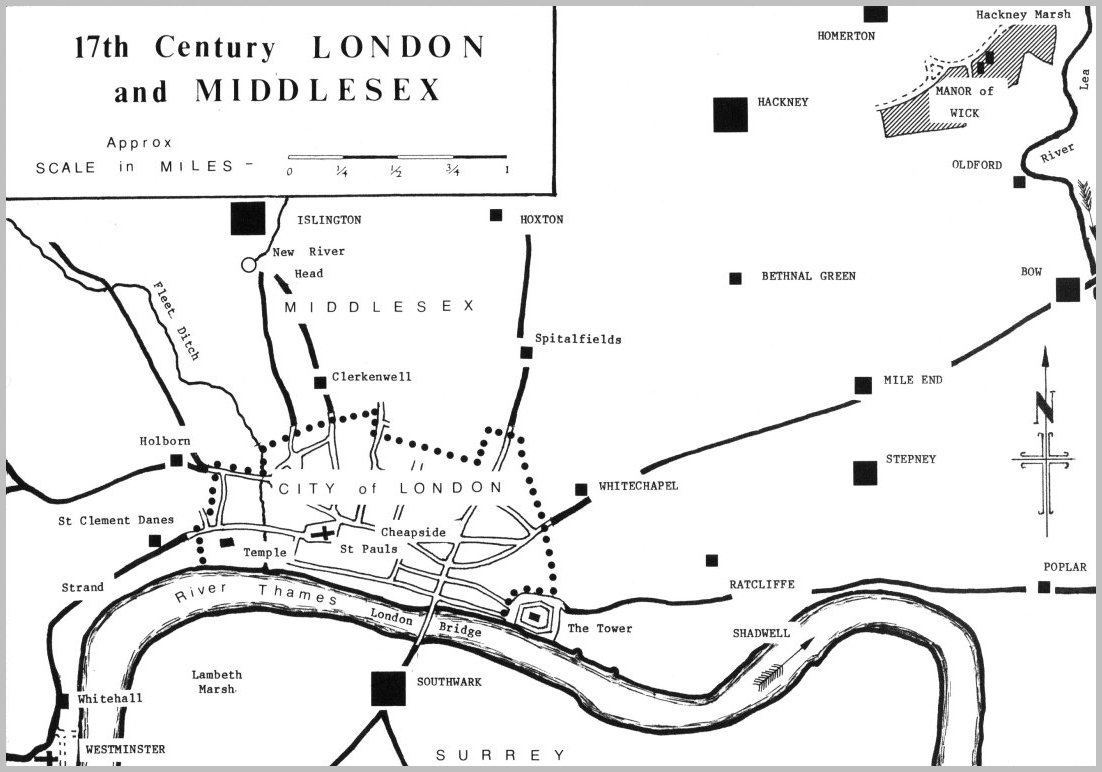
|
||
| Section 6 | ||
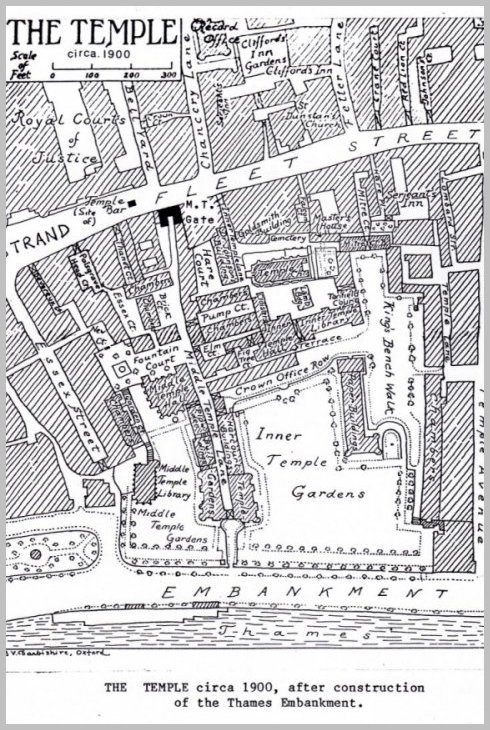
|
||
| Section 7 | ||
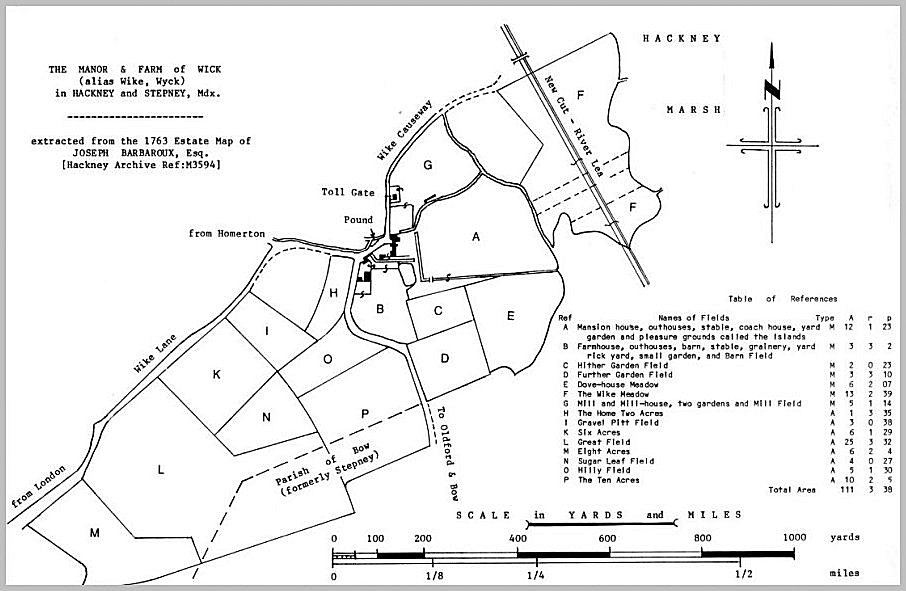
|
||
| Section 8 | ||
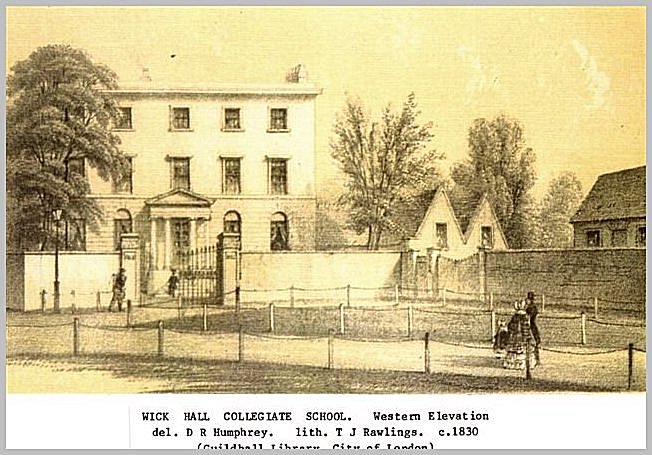
|
||
| Section 9 | ||
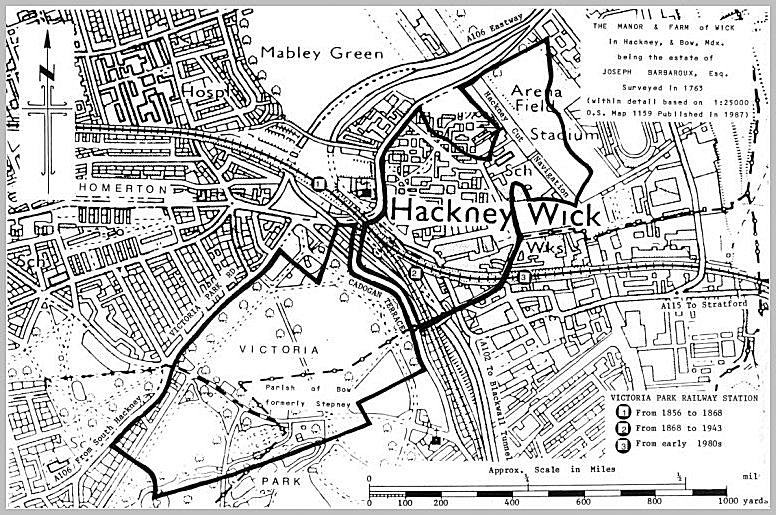
|
||
| Section 10 | ||
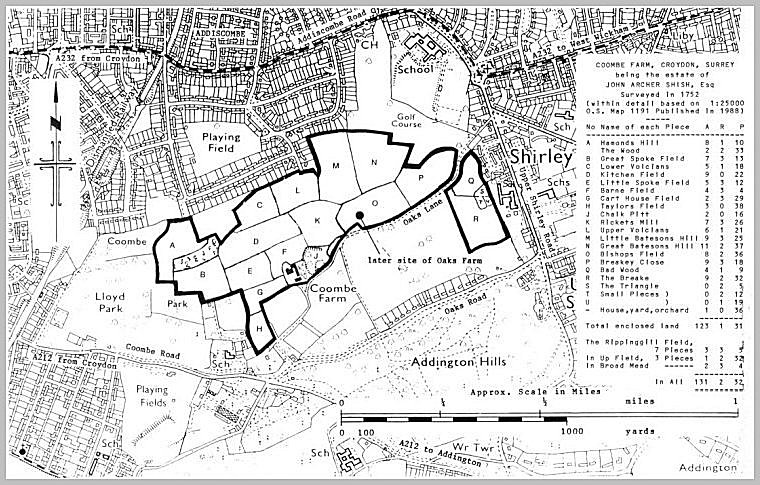
|
||
| Section 11 | ||
|
and Middle Temple, London.
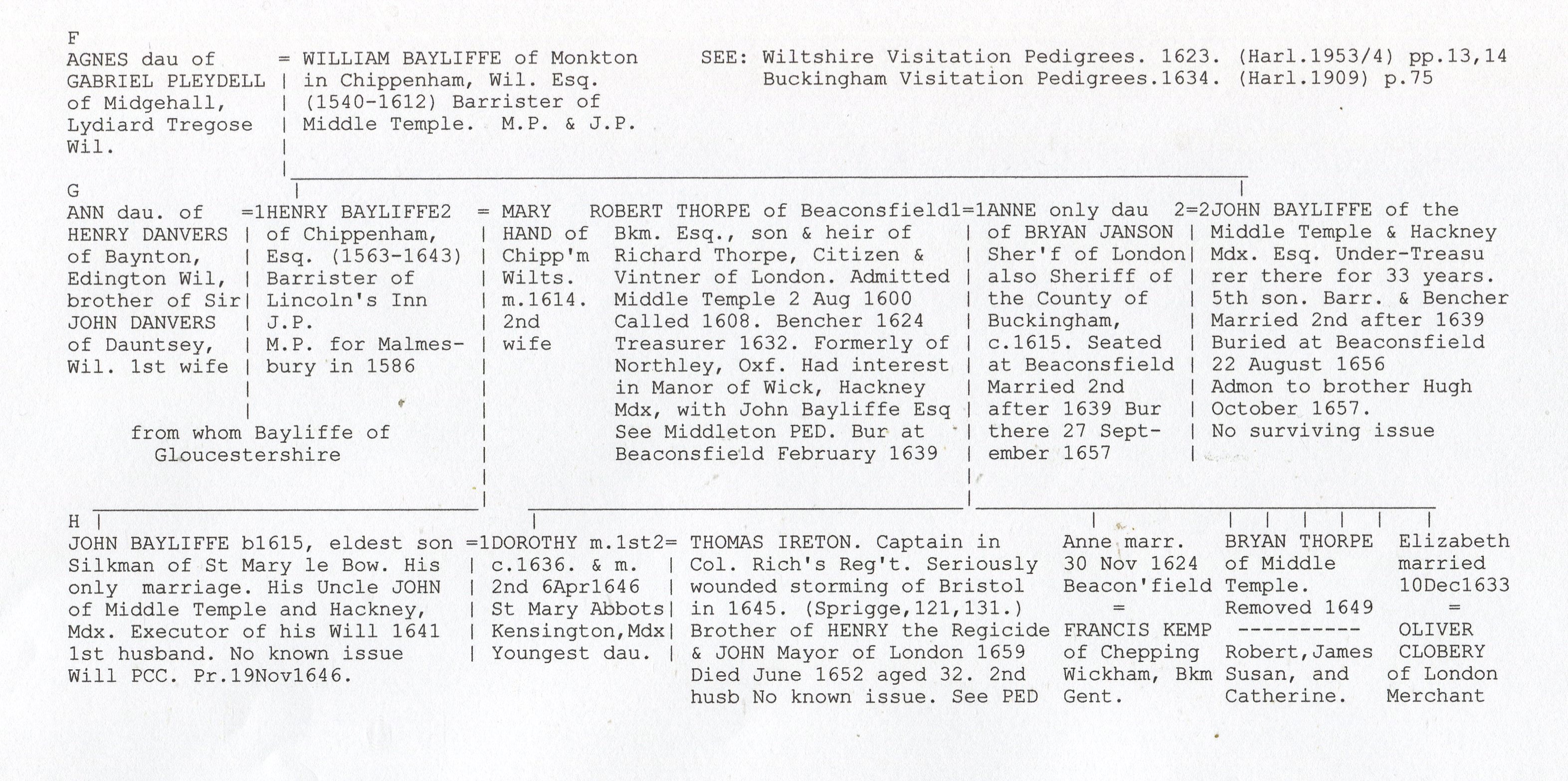
|
||
| Section 12 | ||
|
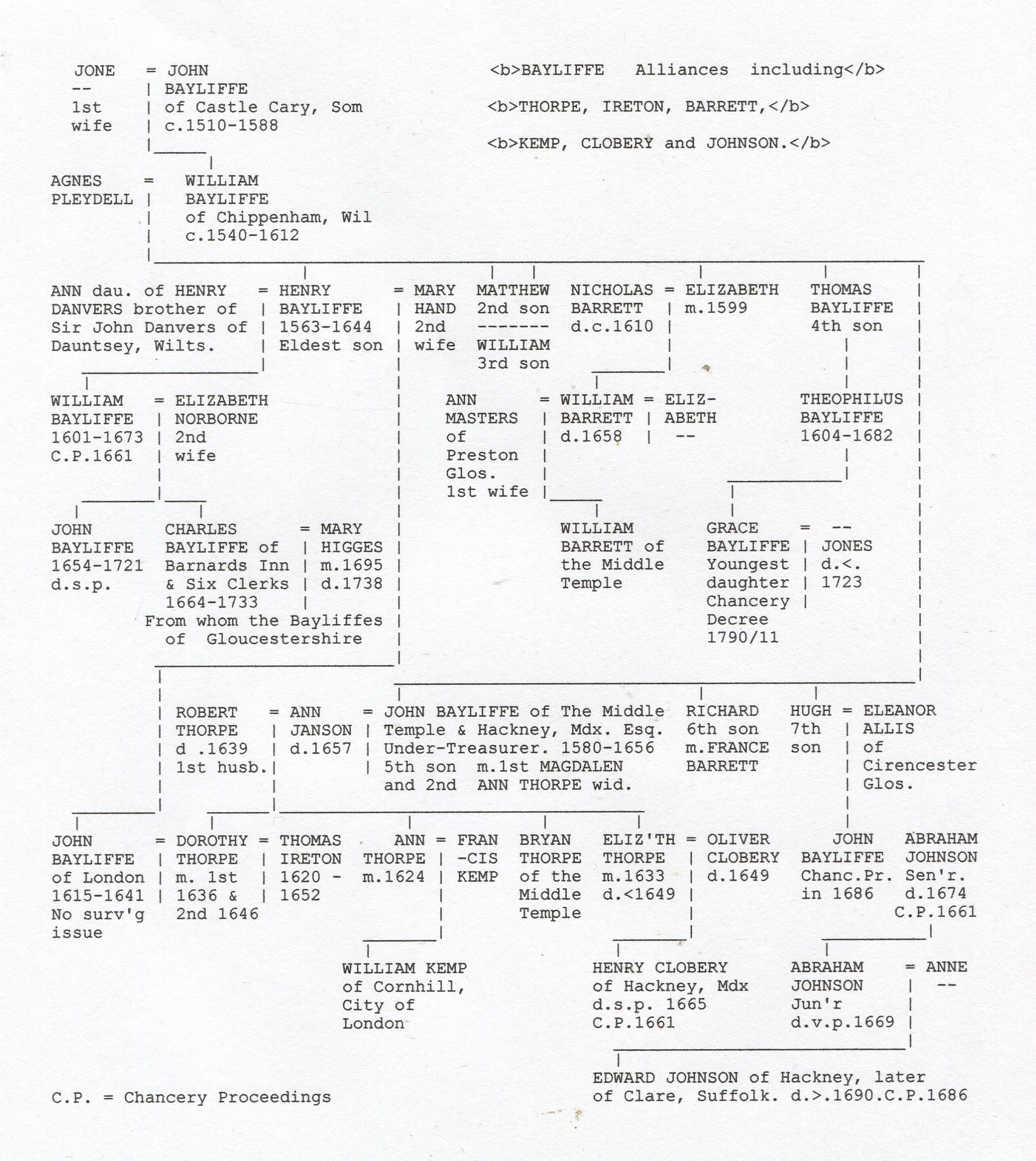
|
||
| NOTE: My thanks are due to Julian Rawes for his input and constructing this web site, and Alan Merryweather for support and proof reading. Bryant G Bayliffe | ||
|
|
||